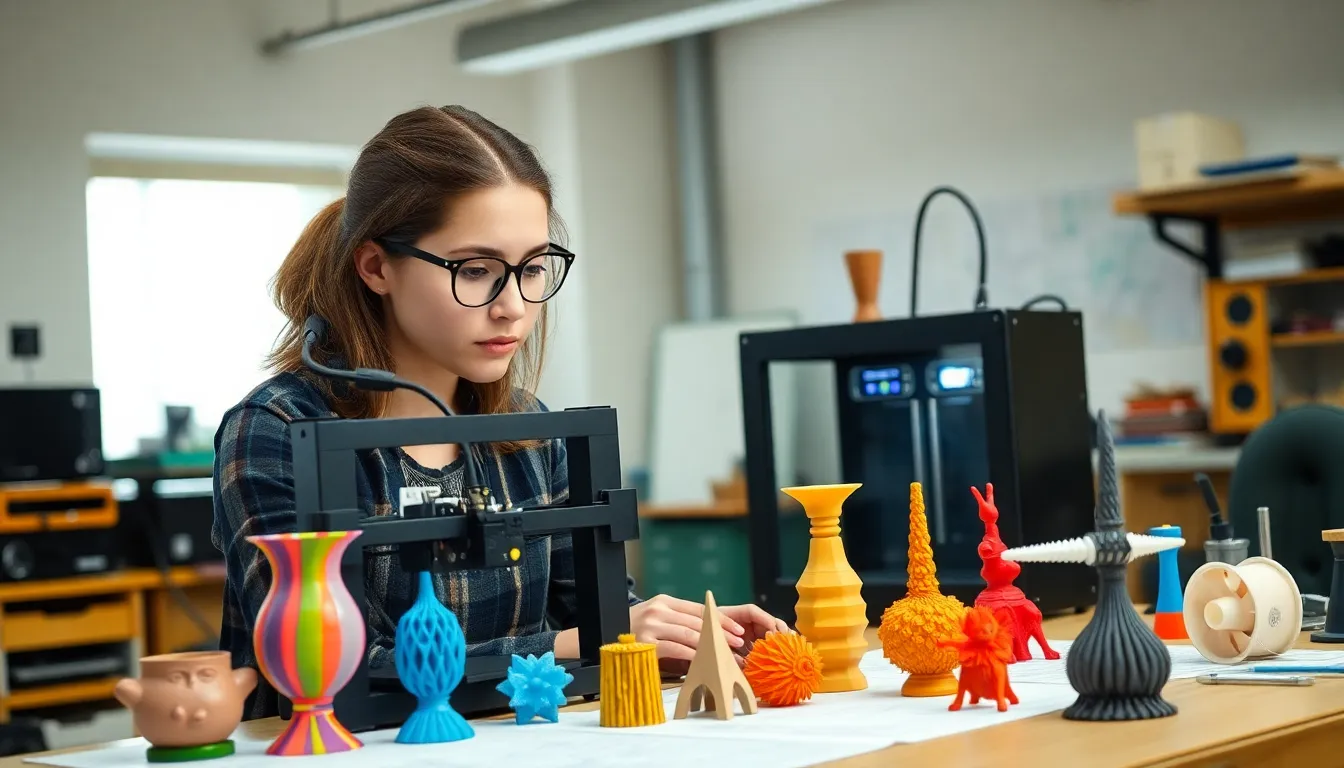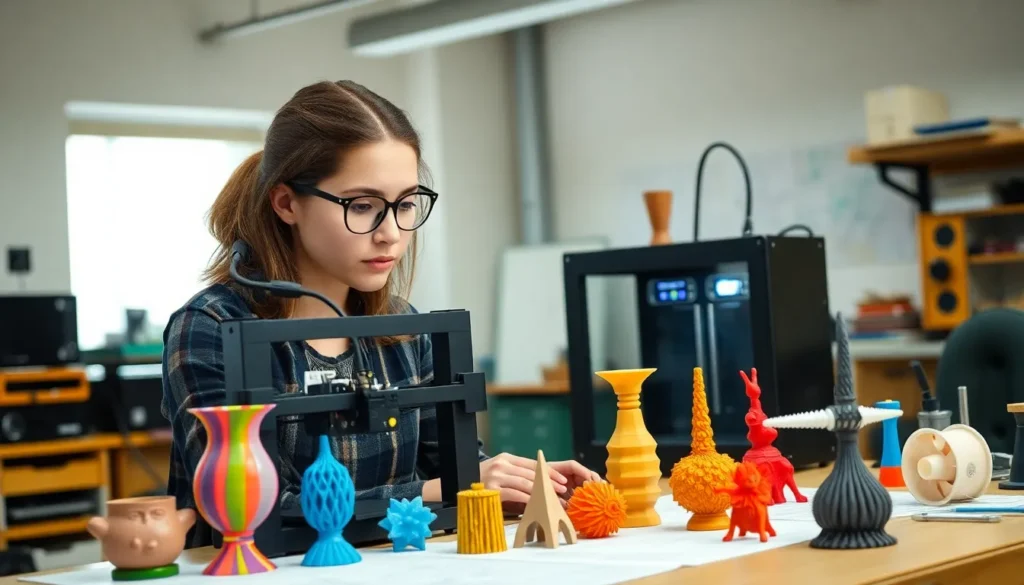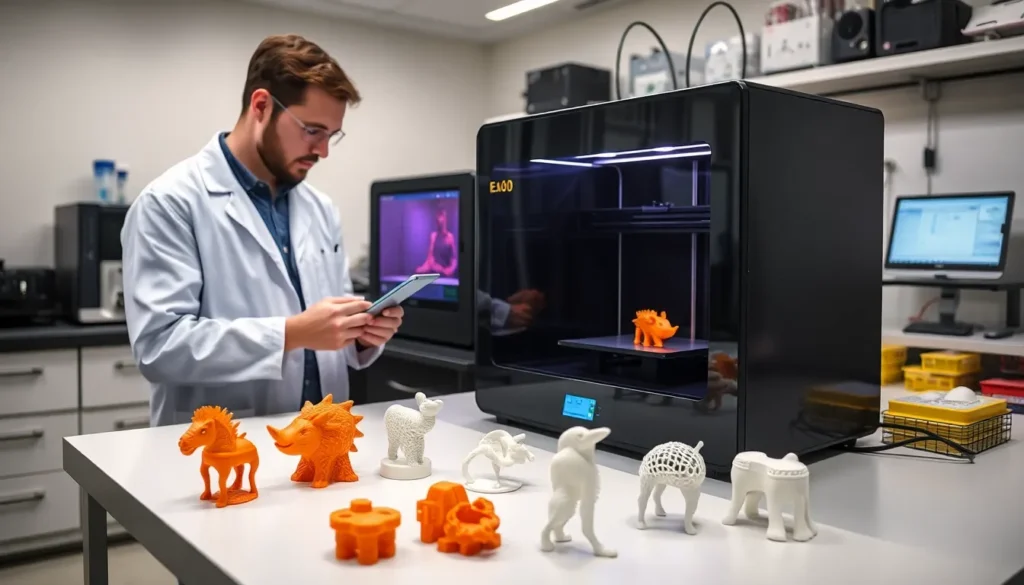In an increasingly digital world, virtual spaces are transforming how people connect, work, and play. From immersive environments in gaming to collaborative platforms for remote teams, these digital realms offer endless possibilities for interaction and creativity. As technology advances, the boundaries between the physical and virtual are blurring, creating experiences that feel more real than ever.
Virtual spaces aren’t just a trend; they’re reshaping industries and redefining social norms. With the rise of virtual reality and augmented reality, users can explore new dimensions and engage with others in ways that were once unimaginable. Understanding the impact and potential of these spaces is essential for anyone looking to navigate the future of communication and collaboration.
Table of Contents
ToggleOverview of Virtual Spaces
Virtual spaces encompass various digital environments where individuals can interact, collaborate, and engage in activities. They include platforms like social media, multiplayer gaming, and virtual reality. These spaces enable seamless communication, transcending geographical boundaries and fostering global connections.
Virtual spaces facilitate different experiences, such as:
- Social Interaction: Users connect through chat rooms, forums, and social media platforms, creating communities with shared interests.
- Collaborative Work: Tools like Zoom and Microsoft Teams allow remote teams to work together in real-time, enhancing productivity and teamwork.
- Immersive Gaming: Multiplayer games offer interactive worlds where players engage with each other and their surroundings, blurring the lines between reality and the virtual realm.
- Educational Platforms: Online learning environments enable students to access courses and resources, promoting knowledge acquisition regardless of location.
Virtual spaces harness advanced technologies, including virtual reality (VR) and augmented reality (AR), to deepen engagements. These immersive experiences offer users unique opportunities that could not be achieved in physical settings. As these spaces evolve, they challenge traditional concepts of interaction, work, and play, marking a pivotal shift in modern communication and collaboration.
Types of Virtual Spaces

Various types of virtual spaces exist, each designed to facilitate specific interactions and experiences. These environments enhance communication and foster engagement across different sectors.
Social Virtual Spaces
Social virtual spaces include platforms like Facebook, Instagram, and Twitter, where users connect and share content. These spaces allow for real-time communication, content sharing, and community building. Users engage in discussions through comments, direct messages, and live streams. Virtual events, such as concerts and meetups, create immersive social experiences, while group chats and forums enable discussions around shared interests.
Professional Virtual Spaces
Professional virtual spaces consist of tools like Zoom, Microsoft Teams, and Slack, focused on facilitating collaboration and productivity. Users conduct video conferences, share files, and manage projects within these platforms. These environments support remote work by creating virtual meeting rooms and collaborative spaces. Integration of project management tools and calendars enhances workflow efficiency, ensuring teams can communicate seamlessly regardless of location.
Educational Virtual Spaces
Educational virtual spaces encompass platforms like Google Classroom and Coursera, transforming traditional learning methods. These environments provide access to online courses, lectures, and interactive materials. Students participate in discussions, submit assignments, and collaborate on projects. Virtual classrooms and study groups offer personalized learning experiences, enabling connections between educators and learners across the globe. Interactive simulations and gamified learning platforms engage students, making education more accessible and enjoyable.
Benefits of Virtual Spaces
Virtual spaces offer numerous advantages that enhance communication and collaboration across various settings. These benefits include improved connectivity and increased accessibility and inclusivity.
Enhanced Connectivity
Enhanced connectivity emerges as a core benefit of virtual spaces. Users experience real-time communication regardless of their physical location. Platforms like Zoom and Microsoft Teams facilitate seamless interaction, allowing teams to collaborate effectively. Social media channels enable individuals to connect with friends and communities worldwide. Gamers engage with others in real-time, building friendships through immersive experiences. Global connections become achievable, fostering networking opportunities and cultural exchange among diverse populations.
Accessibility and Inclusivity
Accessibility and inclusivity are vital components of virtual spaces. Individuals can participate regardless of physical limitations or geographical constraints. Educational platforms like Google Classroom provide resources for students with varying needs, promoting equitable learning opportunities. Virtual gatherings support participation from diverse demographics, including those in remote areas or with mobility challenges. By offering multiple communication modes, such as video, text, and audio, virtual environments accommodate varying preferences. The result is a more inclusive atmosphere that brings together individuals from different backgrounds, enhancing collective participation.
Challenges of Virtual Spaces
Virtual spaces, while offering numerous advantages, encounter various challenges that can hinder their effectiveness and user experience. These challenges include technical limitations and privacy and security concerns.
Technical Limitations
Technical limitations often affect the user experience in virtual spaces. Connectivity issues can disrupt seamless interactions, leading to frustrations during important communications or gaming sessions. Hardware constraints impact performance; users need capable devices to participate fully in immersive environments. Additionally, software compatibility presents challenges when different platforms cannot easily integrate, limiting collaboration across various tools. Latency issues also result in delays during real-time interactions, undermining responsiveness and engagement. As technology evolves, addressing these limitations is essential to enhance the overall effectiveness of virtual spaces.
Privacy and Security Concerns
Privacy and security concerns pose significant risks in virtual spaces. Data breaches can expose sensitive information, making users vulnerable to identity theft and cyber attacks. Many virtual environments collect personal data, often leading to uncertainties about how that data is used and stored. Anonymity in virtual spaces can facilitate inappropriate behavior, including harassment and bullying, which creates an unsafe atmosphere for users. Furthermore, lack of compliance with regulations, such as GDPR or CCPA, can lead to legal repercussions for organizations operating in these spaces. Strengthening security measures and emphasizing transparency is crucial for fostering trust and ensuring safer experiences in virtual environments.
Future of Virtual Spaces
The future of virtual spaces promises innovation and transformation across various sectors. Advancements in technologies such as artificial intelligence (AI) and machine learning are expected to enhance user experiences within these environments. AI-driven recommendations will personalize content and connections, making virtual interactions more relevant and engaging.
Emerging trends indicate a rise in the use of augmented reality (AR) and virtual reality (VR) applications. This integration will facilitate immersive experiences that blend physical and digital realities. For example, businesses may conduct remote training sessions in simulated environments, allowing for interactive learning experiences that enhance retention and skill development.
In the social realm, the future points toward increased integration of virtual spaces with everyday activities. Platforms may evolve to host not only social interactions but also virtual marketplaces, combining shopping with social experiences. Users could attend virtual concerts or events and interact with brands in real-time, creating a more dynamic and engaging environment.
Professionally, the growth of remote work will drive the development of comprehensive collaborative tools. More sophisticated platforms are likely to emerge, offering seamless integrations with existing software and optimizing workflows. Enhanced virtual office environments might mimic physical spaces, complete with interactive whiteboards and virtual meeting rooms, facilitating a sense of presence and camaraderie.
Educational virtual spaces will continue to evolve, embracing innovative teaching methodologies. The introduction of gamified learning environments and interactive simulations can promote deeper understanding and engagement. Platforms may provide personalized learning experiences, adapting content to meet individual learner needs based on performance analytics.
As virtual spaces expand, addressing challenges will become increasingly critical. Ensuring data privacy and secure interactions remains a priority. Regulatory frameworks will likely develop alongside technology, protecting user rights and fostering safe environments.
Overall, the future of virtual spaces holds immense potential. Advancements will redefine connectivity, collaboration, and learning within these digital landscapes, creating enriched experiences that resonate across social, professional, and educational domains.
Virtual spaces are revolutionizing how individuals interact and engage in various aspects of life. As technology advances, these digital environments will continue to evolve, offering even more immersive and inclusive experiences. The integration of AI, AR, and VR promises to enhance connectivity and collaboration, pushing the boundaries of traditional communication.
While challenges like privacy and security must be addressed, the potential for virtual spaces to reshape social, professional, and educational landscapes is undeniable. Embracing this transformation will not only foster innovation but also create opportunities for meaningful connections across the globe. The future of virtual spaces is bright, paving the way for a more interconnected and dynamic world.












